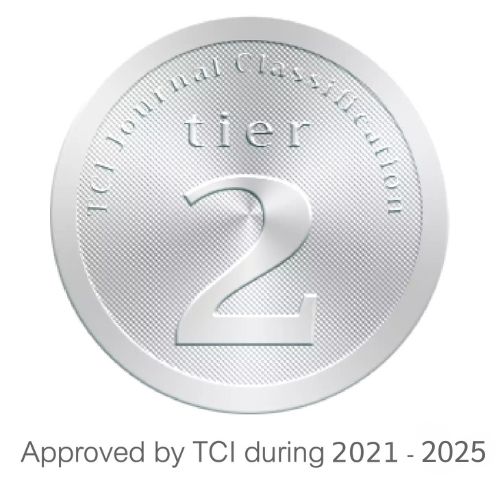ความเที่ยงตรงของแบบสอบถามสำหรับงานวิจัยทางสังคมศาสตร์
Validity of Questionnaire for Social Science Research
Keywords:
ความเที่ยงตรง, แบบสอบถาม, ประเภทของความเที่ยงตรงAbstract
ความเที่ยงตรง คือ คุณสมบัติของเครื่องมือการวิจัยที่สามารถวัดได้ในสิ่งที่ต้องการวัดตามวัตถุประสงค์ มีความเกี่ยวข้องกับคุณภาพและความถูกต้องของผลที่ได้จากการวัดสามารถนำคะแนนที่ได้ไปแปลความหมายถึงสิ่งที่มุ่งวัดได้อย่างเหมาะสม และเครื่องมือการวิจัยที่สำคัญในทางสังคมศาสตร์ คือ แบบสอบถาม บทความนี้ มีวัตถุประสงค์ คือ เพื่อเสนอวิธีการตรวจสอบความเที่ยงตรงของแบบสอบถามสำหรับการวิจัยทางสังคมศาสตร์ ประกอบด้วย1) ความเที่ยงตรงเชิงตีความ 2) ความเที่ยงตรงตามเกณฑ์สัมพันธ์ และ 3) ความเที่ยงตรงเชิงโครงสร้าง อนึ่งการทำความเข้าใจเกี่ยวกับความเที่ยงตรงในการวิจัยมีส่วนสำคัญมีความสำคัญในการดำเนินการวิจัยและส่งผลต่อความน่าเชื่อถือของผลการวิจัย สำหรับความเที่ยงตรงของแบบสอบถามมีหน้าที่หลัก 2 ประการ คือ 1) พิจารณาความเหมาะสมของแบบสอบถามในการเก็บรวบรวมข้อมูลเพื่อประมวลผลการวิจัย และ 2) ใช้ตรวจสอบว่าแบบสอบถามที่สร้างขึ้นเป็นไปตามแนวคิด ทฤษฎี หรือกฎต่างๆ ทางสังคมศาสตร์ หรือไม่ ผู้วิจัยสามารถเลือกใช้วิธีการวัดความเที่ยงตรงให้เหมาะสมกับบริบทของการวิจัยReferences
ฉัตรศิริ ปิยะพิมลสิทธิ์ และอุทัยวรรณ สายพัฒนะ. (2556). ความเที่ยงตรงและความเชื่อมั่น. สืบค้นเมื่อ 10 กันยายน 2556, จาก http://www.watpon.com/Elearning/validity.pdf
ชไมพร กาญจนกิจสกุล. (2555). ระเบียบวิธีวิจัยทางสังคมศาสตร์. ตาก: บริษัท โพรเจ็คท์-โฟว์ จำกัด
ชัยลิขิต สร้อยเพชรเกษม. (2556). การอธิบายโครงสร้างและความเที่ยงตรงของแบบทดสอบ.สืบค้นเมื่อ 30 กันยายน 2556, จาก http://www.edu.tsu.ac.th/major/old_eva/journal/Construct.pdf
นงลักษณ์ วิรัชชัย. (2542). โมเดลลิสเรล: สถิติวิเคราะห์สำหรับการวิจัย. พิมพ์ครั้งที่ 3. กรุงเทพฯ: โรงพิมพ์แห่งจุฬาลงกรณ์
บุญเรียง ขจรศิลป์. (2545). สถิติวิจัย I. กรุงเทพฯ: หจก. พี เอ็น การพิมพ์.
ประสพชัย พสุนนท์. (2555). การวิจัยการตลาด. กรุงเทพฯ: บริษัท สำนักพิมพ์ท้อป จำกัด.
พิชิต ฤทธิ์จรูญ. (2551). หลักการวัดและประเมินผลการศึกษา. พิมพ์ครั้งที่ 4. กรุงเทพฯ: เฮ้าส์ ออฟ เคอร์มีสท์.
พิษณุ ฟองศรี. (2552). การสร้างและพัฒนาเครื่องมือวิจัย. กรุงเทพฯ: บริษัท ด่านสุทธาการพิมพ์จำกัด.
วินิจ เทือกทอง. (2555). การวัดความเที่ยงตรงเชิงเนื้อหา.วารสารครุปริทัศน์ คณะครุศาสตร์ มหาวิทยาลัยราชภัฏสวนสุนันทา. 7 (1): 16 -20.
ศิริชัย กาญจนวาสี. (2548). ทฤษฎีการประเมิน. กรุงเทพฯ: สำนักพิมพ์จุฬาลงกรณ์มหาวิทยาลัย.
ศุภกิจ วงศ์วิวัฒน์นุกิจ. (2550). พจนานุกรมศัพท์การวิจัยและสถิติ. กรุงเทพฯ: ด่านสุทธาการพิมพ์.
สำนักงานคณะกรรมการวิจัยแห่งชาติ. (2547). ตำราชุดฝึกอบรมหลักสูตร “นักวิจัย”. กรุงเทพฯ: กลุ่มงานฝึกอบรมการวิจัย สำนักงานคณะกรรมการวิจัยแห่งชาติ (วช.).
Allen, M. J. and Yen, W. M. (1979). Introduction to Measurement Theory.Monterey, C.A. : Brooks/Cole Publishing Company.
Anastasi, A. (1982). Psychological Testing. New Yark : Macmillan Publishing company.
Bollen, K. A. (1989). Structural Equations with Latent Variables.North Carolina : John Wiley & Sons, Inc.
Campbell, D. T., and Fiske, D. W. (1959). Convergent and Discriminant Validation by the Multitrait-Multimethod Matrix. Psychological Bulletin. 56(2): 81 – 105.
Davis, L. L. (1992). Instrument Review: Getting the Most from a Panel of Experts. Applied Nursing Research. 5: 194 - 197.
Drost, E. (2011). Validity and Reliability in Social Science Research. Education Research and Perpectives. 38(1): 105 – 123.
Hair, J. A., Tatham, R., and Black, W. (1995). Multivariate Data Analysis with Readings. Englewood Cliffs: Prentice-Hall International.
Hu, L., and Bentler, P. M. (1999). Cutoff Criteria for Fit Indices in Covariance Structure Analysis: Conventional Criteria Versus New Alternatives. Structural Equation Modeling. 6: 1 - 55.
Lawshe, C. H. (1975). A Quantitative Approach to Content Validity. Personnel Psychology. 28: 563 – 575.
Lyman, H. B. (1963). Test Scores and What They Mean. Englewoodcliffs, N.J. : Prentice-Hall, Inc.
Miller, M. J. (2013). Reliability and Validity. Retrieved August 21, 2013, from http://michaeljmillerphd.com/res500_lecturenotes/ reliability_and_validity.pdf
Polit, D. F., and Beck, C. T. (2012). Nursing Research: Generating and Assessing Evidence for Nursing Practice. 9 th Edition. China : Lippincott Williams and Wikins.
Popham, W. J. (1990). Modern Educational Measurement: A Practitioner’s Perspective. Englewood Cliffs, N.J. : Prentice-Hall, Inc.
Punch, K. (1998). Introduction to Social Research.London : Sage Publications LtdSiedlecki, K. L., Stern, Y., Reuben, A., Sacco, R. L.
Elkind, M. S. V., and Wright, C. B. (2009). Construct Validity of Cognitive Reserve in a Multiethnic Cohort: The Northern Manhattan Study. Journal of the International Neuropsychological Society. 15 : 558 – 569 .
Trochim W. M. K. (2006). Research Methods Knowledge Base. Retrieved August 21, 2013, from http://www.socialresearchmethods.net/kb/index.php
Waltz, C. F., and Bausell, R. B. (1981). Nursing research: Design, statistics, and computer analysis. Philadelphia : F. A. Davis.
Yaghmaie, F. (2003). Content Validity and its Estimation. Journal of Medical Education. 3(1): 25 – 27.
Zamanzadeh, V., Rassouli, M., Abbaszadeh, A., Alavi-Majd, H., Nikanfar, A. R., Ghahramanian, A. (2014). Details of content validity and objectifying it in instrument development. Nurs Pract Today. 1(3): 163-171.








